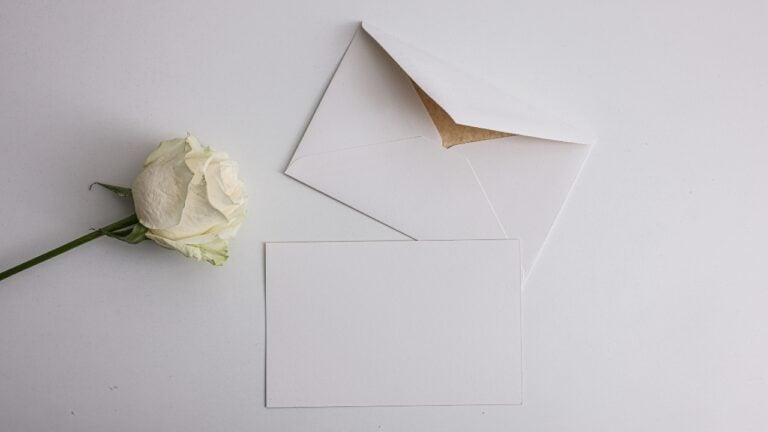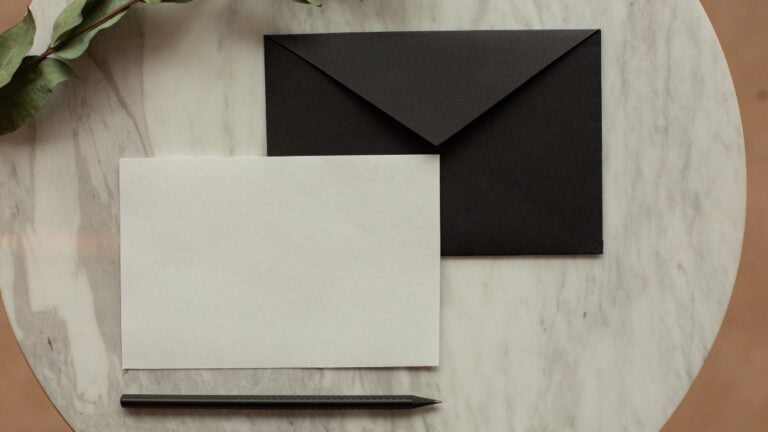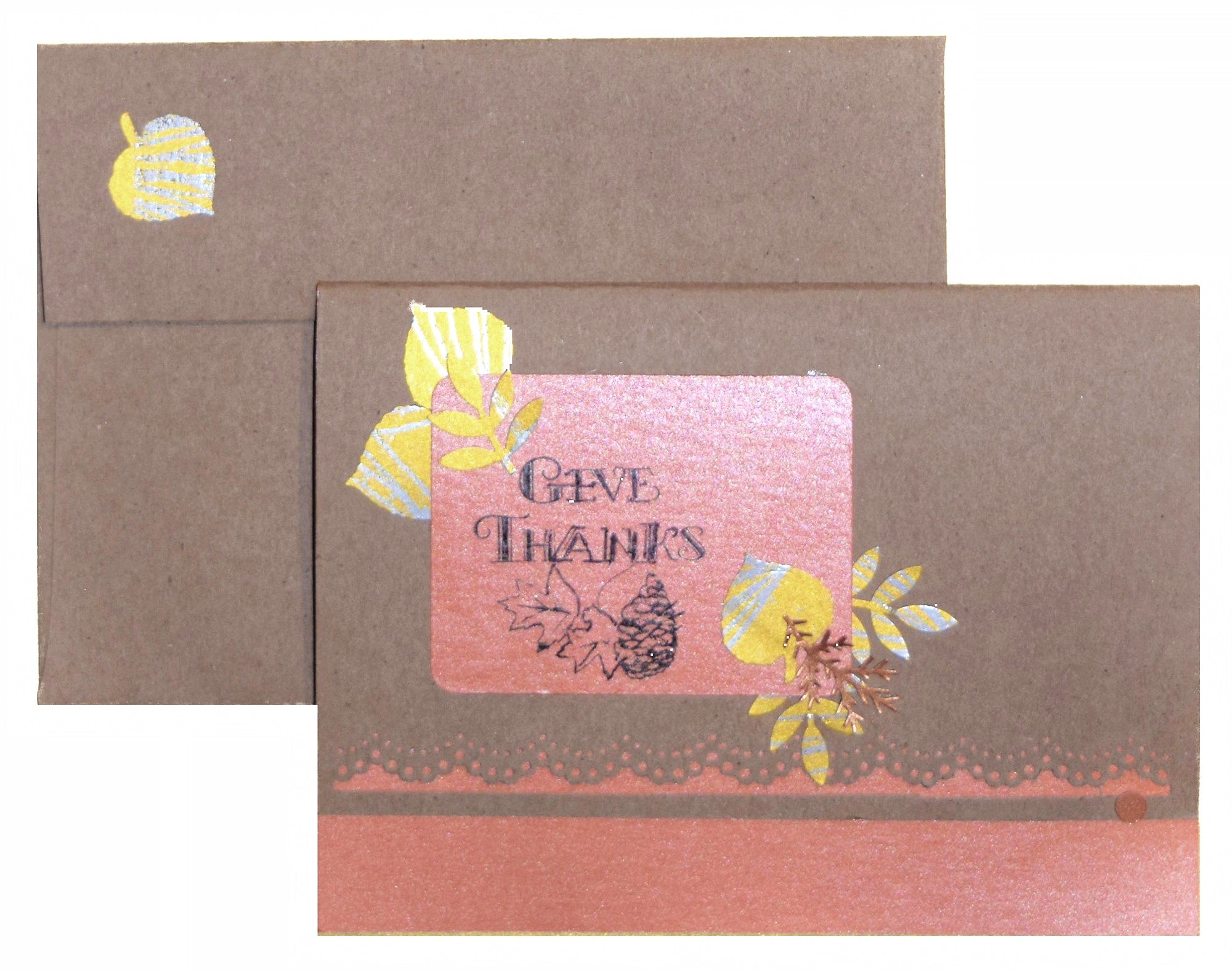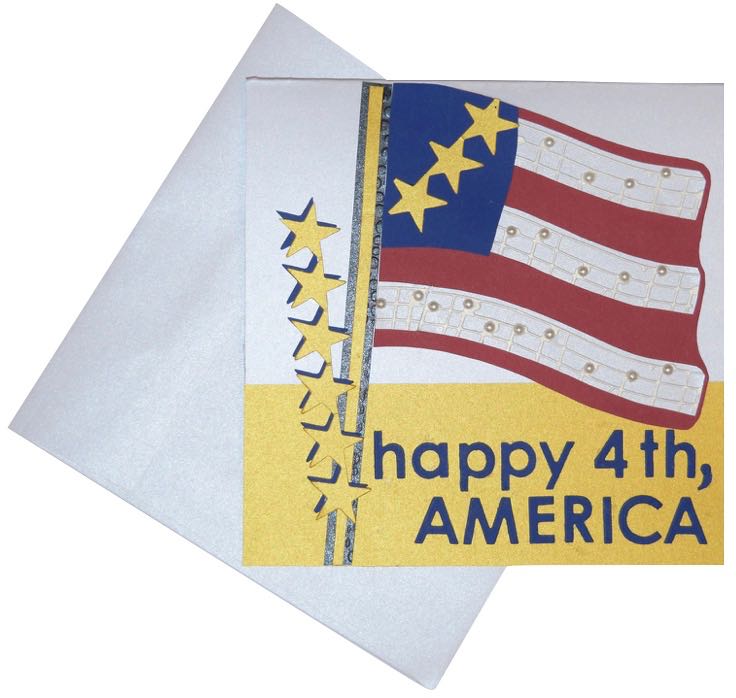5 Different Envelope Types – What Are They?
Whether you are searching for the perfect textured wedding invitations for your special day or in need of professional stationery that makes a great first impression, the envelopes that you choose make a big difference.
5 Different Envelope Types
Little things, like the color or paper texture for invitations, turn a basic envelope into something special. What are the most common types of envelopes?
1. Standard No. 10 Commercial Envelopes
The envelopes that most people associate with getting the mail every day are known as No. 10 commercial envelopes. These are designed to easily fit sheets of 8.5” x 11” printer paper.
Commercial envelopes typically have a simple pointed or squared flap, and they exclusively seal lengthwise. Because these envelopes are designed with practicality and affordability in mind, they are most prevalent in classic white and off-white.
2. Announcement or A-Style Envelopes
When you are looking at common wedding invitation paper types, you will come across A-style envelopes. These envelopes come in a variety of sizes and shapes, and they are used for personal correspondence, invitations, greeting cards, notecards, and save-the-dates.
Flap styles vary and can include charming accents like scalloping. Because of the popularity of announcement envelopes, you can find them in virtually any paper weight or color. It’s best to choose an envelope that coordinates with your paper texture for invitations.
3. Baronial Envelopes
While announcement envelopes are often used for formal invitations, baronial envelopes are typically used as a step above basic envelopes and a step below announcement envelopes. Holiday cards, thank you cards, and notecards can all be placed inside of a baronial envelope.
Aside from paper texture and weight differences, the primary difference between announcement and baronial envelopes is that baronial envelopes have a sharp, pointed flap.
4. Catalog Envelopes
In some cases, you need to mail documents that cannot be folded. Catalog envelopes allow you to mail standard size paper without creases, and most of them are 9” x 12”. Depending on your paper texture for invitations, using catalog envelopes to prevent creasing may be preferable.
The most recognizable type of catalog envelope is bright yellow manila envelopes, but they come in numerous colors and weights.
5. Remittance Envelopes
Sometimes when mailing an envelope, you want to make the return process as simple as possible. Many subscription companies, non-profits, and organizations doing fundraising rely on remit envelopes to allow for easy returns.
Donors, customers, and recipients can complete their order or include a payment without having an envelope on hand. Some crafty couples also use remittance envelopes with a unique paper texture for invitations, as remit envelopes make it easy to collect RSVPs.
What Is the Best Envelope Paper Texture for Invitations?
When choosing your invitation card paper type, there are many considerations to take into account. Many couples choose a classic matte or uncoated paper texture for invitations, but there are endless options if you’re looking to have fun.
What factors should you consider when choosing cardstock paper for invitations and envelopes?
- How will you be printing the invitations? Some fonts and styles print better on matte paper, while others still shine on textured cardstock paper. Legibility is particularly important for printed addresses on envelopes.
- What theme and design do you want your wedding to have? Many couples choose paper and envelopes in their wedding colors. Additionally, invitations that are smooth and sleek coordinate perfectly with a modern wedding, while rustic and natural paper would be a better fit for a barn wedding.
- Do you want your invitations and envelopes to be keepsakes? Some paper textures are better suited to longevity. Always look for papers that are photo-safe or archival quality, as they will stand the test of time even if they are not framed.







